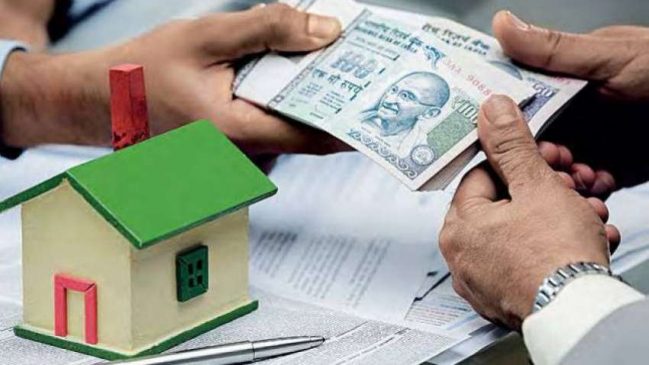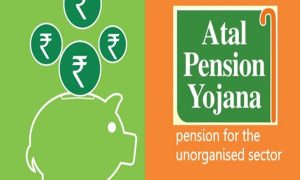Q2 results of top banks show high double-digit growth in personal, credit card loans
NEW DELHI: The banking regulator – Reserve Bank of India – has expressed its concern over the growing personal loans, yet the latest bank results show that there’s no stopping retail credit surge. HDFC Bank saw its domestic retail loan portfolio grow by 112.1% in the September quarter compared to 29.5% growth in commercial and rural banking loans and 8% growth in corporate and other wholesale loans. The three-digit year-on-year growth in retail loan could be a result of HDFC Bank’s merger with its home loan subsidiary HDFC, but other banks also continue to see high growth in retail loans.
Read More: ET NOW SWADESH Announces Mutual Fund Mahakumbh, India’s Most Powerful Financial Fair
ICICI Bank saw its retail loan portfolio grow by 21.4% year-on-year in the second quarter. Its total loan portfolio during the quarter grew by 19%. The bank’s unsecured portfolio comprises of personal loans and credit card portfolio and it’s about 13.3% of total portfolio. The consumer finance portfolio increased by about 40% during the second quarter while credit card loans increased by about 30% year-on-year.
Axis Bank saw its retail loan portfolio grow by 23%. Kotak Mahindra Bank posted a healthy 31% growth in retail loans including credit cards. Public Sector bank PNB saw its core retail loan 16.5% during the quarter. While its home loan portfolio grew by 13.7%, vehicle loan portfolio grew at a strong 28.3% and unsecured personal loans at 39%.
The RBI has cautioned banks and NBFCs against high growth in retail lending especially in unsecured personal loans. Noting that certain components of personal loans are recording very high growth, the RBI governor Shakti Kanta Das in its monetary policy statement earlier this month said that RBI is closely watching these loans for any signs of incipient stress. “Banks and NBFCs would be well advised to strengthen their internal surveillance mechanisms, address the build-up of risks, if any, and institute suitable safeguards in their own interest,” he said in his statement.
Even Michael Debabrata Patra, the deputy governor, in one of his recent speeches said that conventional wisdom suggests that retail loans being diffused across a wide borrower base mitigate the accumulation of systemic risk, but the RBI is watchful as herding by banks in the retail loan space might lead to potential cascades across the system if defaults do occur.
Growth momentum to continue
But are banks also concerned about the surge in retail credit?
“…it (retail loan portfolio) has been built with our core principles of return of capital and harnessing ecosystems and, I think we have been saying this for a lot of time. For us, the customer is more important than the product and, most of the increases have been for portfolios where there have been existing relationships. Almost 85% of the portfolio comprises salaried employees with customers being employed with the reputed corporates, MNCs, government entities, PSUs, defence, etc,” says Batra when media asked about the RBI’s growing concern with high growth in retail loans.
The bank’s CFO Anindya Banerjee told the media that for personal loans, the bank will continue to monitor the portfolio and whatever comes through the credit filters in the customer segments that it is comfortable with, it will take that.“In any case, we are not particularly targeting a certain level of loan growth. If credit conditions are not so favourable in our view and we need to prune it by a percentage point or two that is fine. But, currently there is no softness in the secured loan categories either,” said Anindya Banerjee.
Amitabh Chaudhry, CEO of Axis Bank, sees the growth momentum in retail credit ‘continuing at this point in time’. “Whatever we grow and whatever pace you grow at, it is all based on certain risk guardrails, certain outlook and understanding of risks which we have as a Bank, and we will keep that in mind as we grow,” Chaudhry further adds.
Govt ain’t complaining
And while the RBI has been raising the red flag on high retail loan growth, the government is not complaining.In its Monthly Economic Review, the finance ministry says that increased demand for housing and vehicle loans reflects the confidence of the households in their future employment and income prospects. The report pointed out that the magnitude of vehicle loans, an important indicator of growth in private consumption, has been growing at double-digits since April 2022, and housing loans have been seeing ‘a steady double-digit growth’ since May 2021.
Read More: This Post Office Savings Scheme offers monthly income of Rs 9,000
“Households are making a smart investment choice of acquiring physical assets, taking advantage of larger credit availability from banks and after a long period of elevated returns in financial assets,” says the report.
In August, retail loans rose by 18.3% year-on-year and remained the prime contributor of overall credit growth. Credit to the housing sector recorded consistent double-digit expansion (13.8% in August) while vehicle loan growth strengthened to 20.6%. Credit card loans maintained high growth (30.0% in August) reflecting the buoyancy in demand from contact-intensive services.
Even a couple of Monetary Policy Committee (MPC) members see the increase in household liabilities as a big positive. According to Dr Ashima Goyal, The rise in financial liabilities implies a rise in household physical investment and shows the interest sensitivity of demand in India, with a youthful population borrowing to acquire assets.
“This willingness to consume at the cost of reducing savings is very important because it is household consumption that has been propping up the economy in the face of headwinds from fiscal consolidation, weak external demand and tepid capital investment,” noted Prof Jayanth R. Varma.
Read More: NPS: How to get Rs 1 lakh monthly pension with 20 years of investment
Dr Ashima Goyal, though, cautioned against sudden rise in household debt, even if it is low by international standards. “It is best to restrain over-enthusiasm in good times and thus avoid a crash. Prudential tightening, such as raising LTV ratios or risk weights, would be preferable to raising policy rates more,”she said.





































